
How to Use UNO R4 Wifi: Examples, Pinouts, and Specs
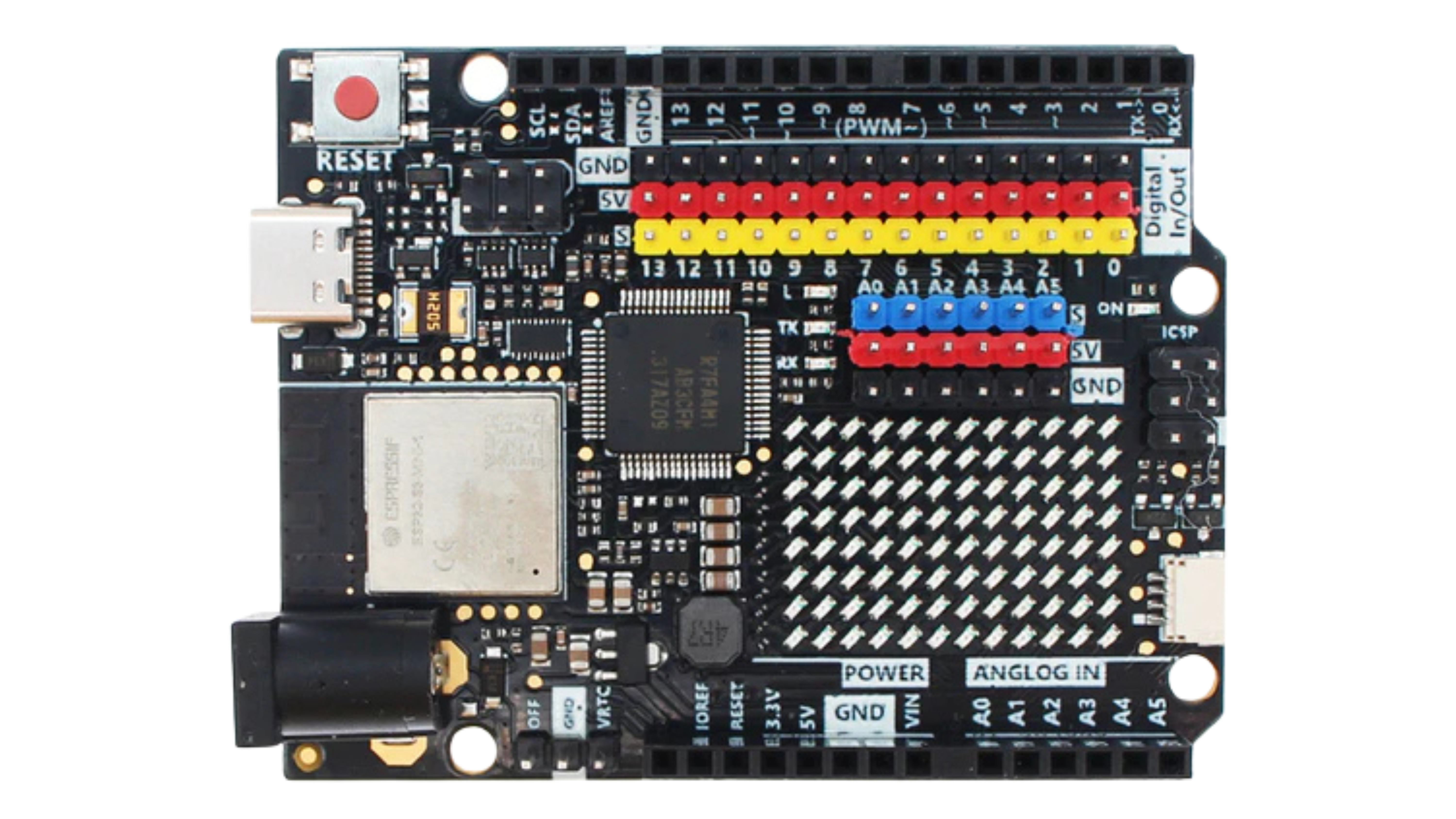
 Design with UNO R4 Wifi in Cirkit Designer
Design with UNO R4 Wifi in Cirkit DesignerIntroduction
The UNO R4 Wifi is a microcontroller board built around the ATmega4809 microcontroller, featuring integrated Wi-Fi capabilities powered by the ESP32-S3 module. This board is part of the Arduino ecosystem, making it highly versatile and beginner-friendly. It is designed for Internet of Things (IoT) applications, enabling seamless wireless communication and control. The UNO R4 Wifi is an excellent choice for projects requiring wireless connectivity, such as smart home devices, remote monitoring systems, and data logging applications.
Explore Projects Built with UNO R4 Wifi
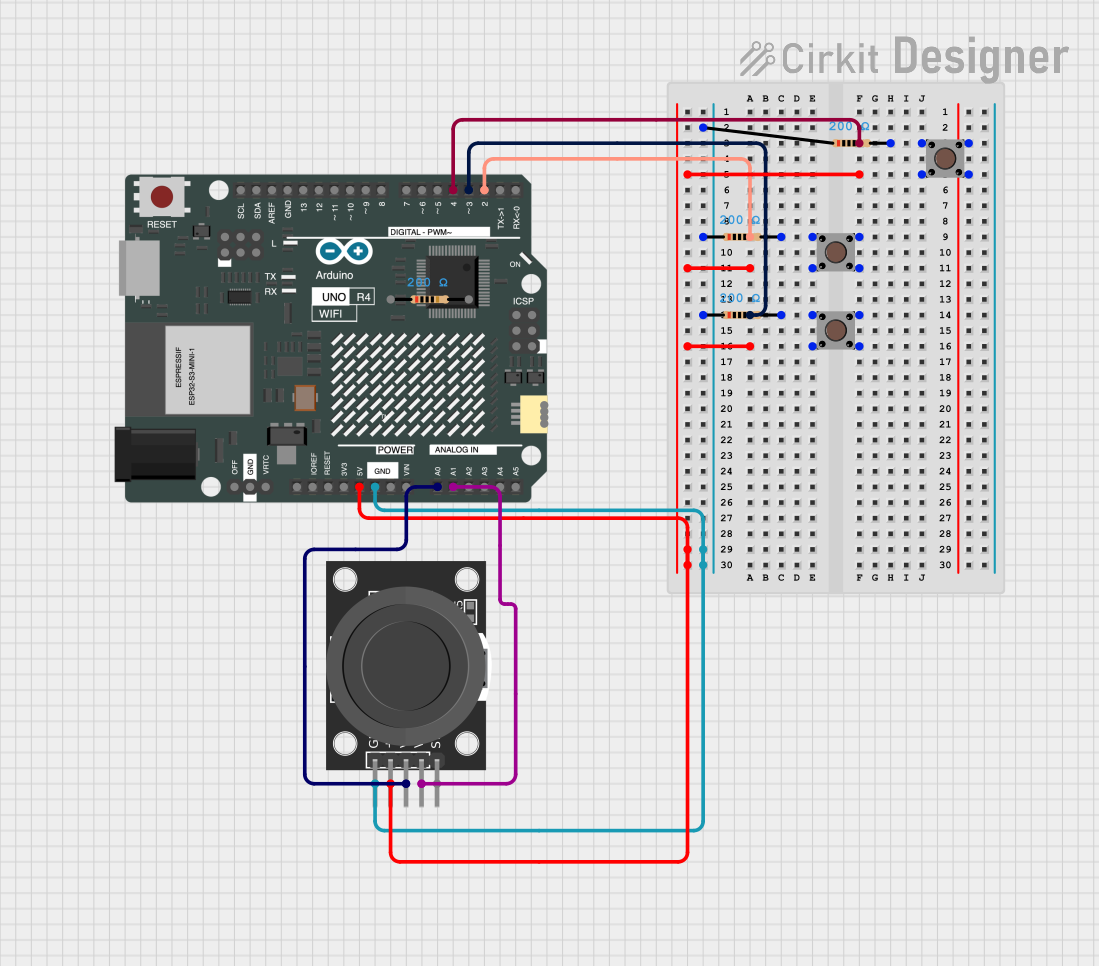
 Open Project in Cirkit Designer
Open Project in Cirkit Designer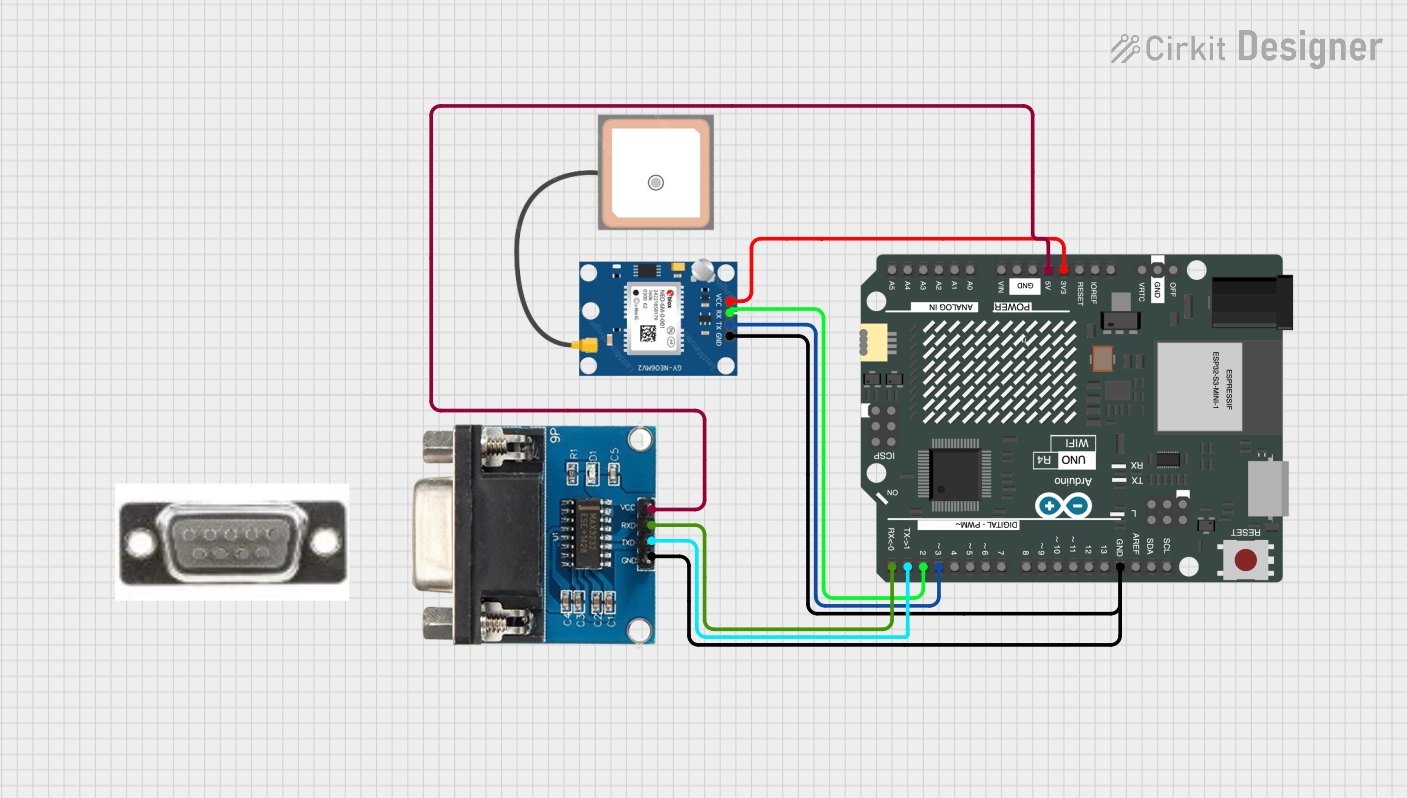
 Open Project in Cirkit Designer
Open Project in Cirkit Designer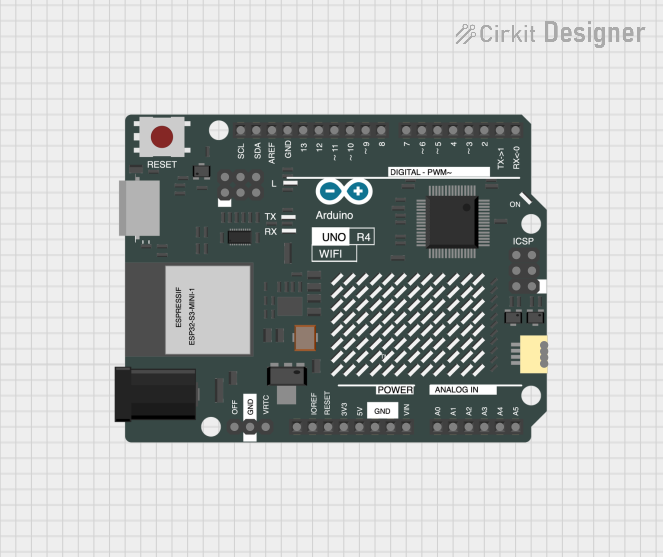
 Open Project in Cirkit Designer
Open Project in Cirkit Designer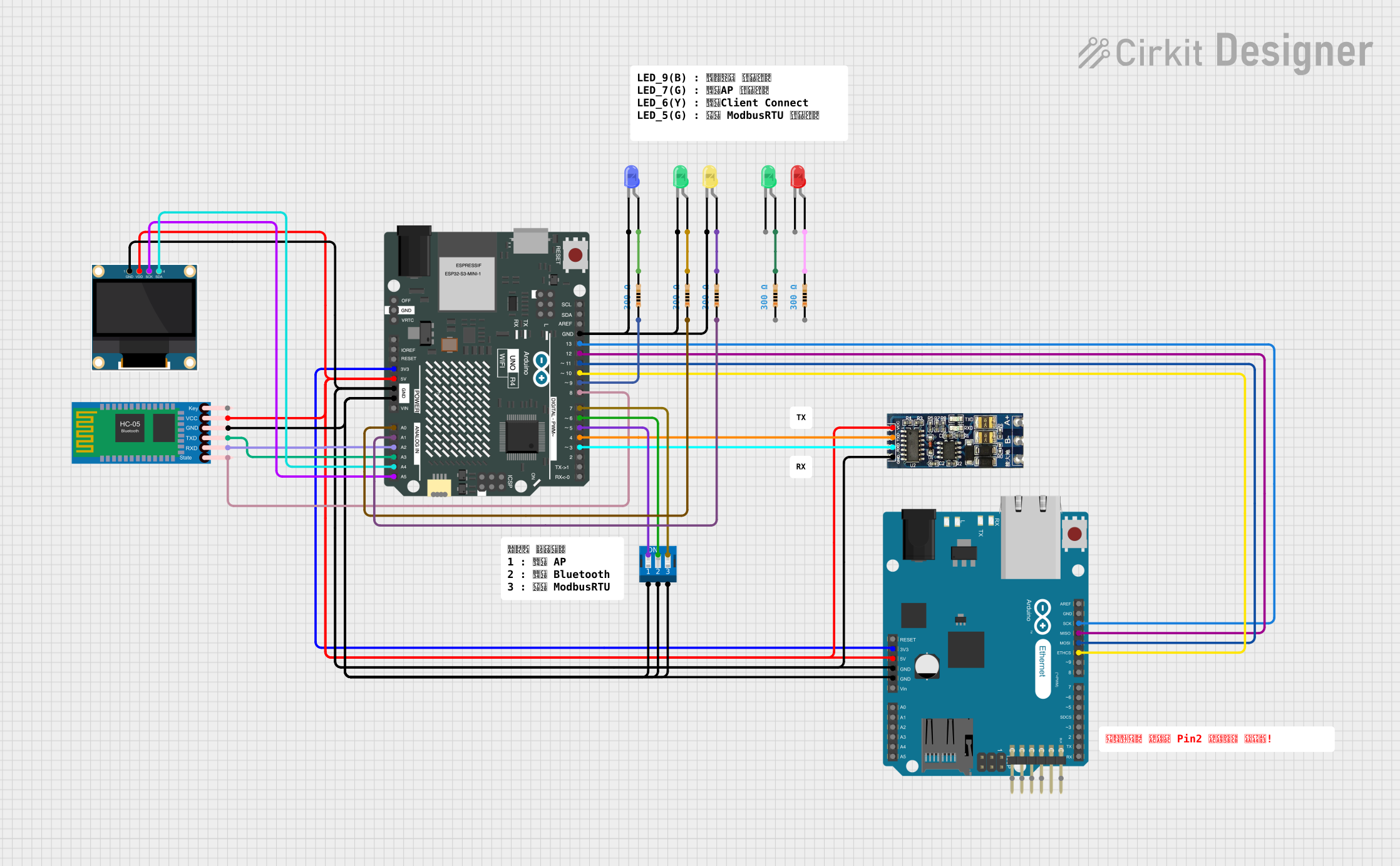
 Open Project in Cirkit Designer
Open Project in Cirkit DesignerExplore Projects Built with UNO R4 Wifi

 Open Project in Cirkit Designer
Open Project in Cirkit Designer
 Open Project in Cirkit Designer
Open Project in Cirkit Designer
 Open Project in Cirkit Designer
Open Project in Cirkit Designer
 Open Project in Cirkit Designer
Open Project in Cirkit DesignerCommon Applications and Use Cases
- IoT devices and smart home automation
- Wireless sensor networks
- Remote data logging and monitoring
- Prototyping Wi-Fi-enabled embedded systems
- Educational projects and workshops
Technical Specifications
The UNO R4 Wifi combines the power of the ATmega4809 microcontroller with the wireless capabilities of the ESP32-S3 module. Below are the key technical details:
Key Technical Details
- Microcontroller: ATmega4809 (8-bit AVR)
- Wi-Fi Module: ESP32-S3
- Operating Voltage: 5V
- Input Voltage (recommended): 7-12V
- Input Voltage (limit): 6-20V
- Digital I/O Pins: 14 (6 PWM outputs)
- Analog Input Pins: 6
- Flash Memory: 256 KB (ATmega4809)
- SRAM: 6 KB
- EEPROM: 256 bytes
- Clock Speed: 16 MHz
- USB Interface: USB-C
- Wi-Fi Frequency: 2.4 GHz
- Dimensions: 68.6 mm x 53.4 mm
- Weight: ~25 g
Pin Configuration and Descriptions
The UNO R4 Wifi features a standard Arduino pinout, with additional pins for Wi-Fi functionality. Below is the pin configuration:
ATmega4809 Pinout
| Pin | Name | Description |
|---|---|---|
| 0-13 | Digital I/O | General-purpose digital input/output pins. Pins 3, 5, 6, 9, 10, and 11 support PWM. |
| A0-A5 | Analog Input | Analog input pins for reading sensor data (10-bit resolution). |
| VIN | Voltage Input | External power supply input (7-12V recommended). |
| 5V | 5V Output | Regulated 5V output for powering external components. |
| 3.3V | 3.3V Output | Regulated 3.3V output for low-power components. |
| GND | Ground | Ground connection. |
| RESET | Reset | Resets the microcontroller. |
ESP32-S3 Wi-Fi Module Pinout
| Pin | Name | Description |
|---|---|---|
| TX | Transmit | Serial communication transmit pin. |
| RX | Receive | Serial communication receive pin. |
| EN | Enable | Enables the ESP32-S3 module. |
| IO0 | GPIO 0 | General-purpose input/output pin for the ESP32-S3. |
Usage Instructions
The UNO R4 Wifi is designed to be easy to use, even for beginners. Follow the steps below to get started:
How to Use the UNO R4 Wifi in a Circuit
- Power the Board: Connect the UNO R4 Wifi to your computer using a USB-C cable or supply external power via the VIN pin.
- Connect Components: Attach sensors, actuators, or other peripherals to the appropriate pins.
- Program the Board: Use the Arduino IDE to write and upload code to the board. Select "Arduino UNO R4 Wifi" as the board type in the IDE.
- Enable Wi-Fi: Use the ESP32-S3 module to connect to a Wi-Fi network for IoT applications.
Important Considerations and Best Practices
- Ensure the input voltage does not exceed the recommended range (7-12V) to avoid damaging the board.
- Use level shifters when interfacing with 3.3V components to prevent overvoltage issues.
- When using the Wi-Fi module, ensure the antenna is not obstructed for optimal signal strength.
- Avoid drawing excessive current from the 5V or 3.3V pins to prevent overheating.
Example Code for Wi-Fi Connectivity
Below is an example of how to connect the UNO R4 Wifi to a Wi-Fi network and send data to a server:
#include <WiFi.h> // Include the Wi-Fi library for ESP32-S3
// Replace with your network credentials
const char* ssid = "Your_SSID";
const char* password = "Your_PASSWORD";
void setup() {
Serial.begin(115200); // Initialize serial communication
WiFi.begin(ssid, password); // Connect to Wi-Fi network
// Wait for connection
while (WiFi.status() != WL_CONNECTED) {
delay(1000);
Serial.println("Connecting to Wi-Fi...");
}
Serial.println("Connected to Wi-Fi!");
Serial.print("IP Address: ");
Serial.println(WiFi.localIP()); // Print the device's IP address
}
void loop() {
// Add your main code here
}
Troubleshooting and FAQs
Common Issues and Solutions
The board is not detected by the Arduino IDE:
- Ensure the correct board type ("Arduino UNO R4 Wifi") is selected in the IDE.
- Install the necessary board package from the Arduino Boards Manager.
- Check the USB-C cable for data transfer capability (some cables are power-only).
Wi-Fi connection fails:
- Double-check the SSID and password for typos.
- Ensure the Wi-Fi network is operating at 2.4 GHz (not 5 GHz).
- Move the board closer to the Wi-Fi router to improve signal strength.
The board overheats:
- Verify that the input voltage is within the recommended range (7-12V).
- Avoid drawing excessive current from the 5V or 3.3V pins.
FAQs
Can I use the UNO R4 Wifi with existing Arduino shields? Yes, the UNO R4 Wifi is compatible with most Arduino shields designed for the UNO form factor.
Does the board support Bluetooth? No, the UNO R4 Wifi does not include Bluetooth functionality. It is designed for Wi-Fi-based applications.
How do I update the firmware for the ESP32-S3 module? Use the Arduino IDE or ESP32-specific tools to upload firmware to the ESP32-S3 module. Ensure the correct COM port is selected.
By following this documentation, you can effectively utilize the UNO R4 Wifi for a wide range of IoT and embedded system projects.